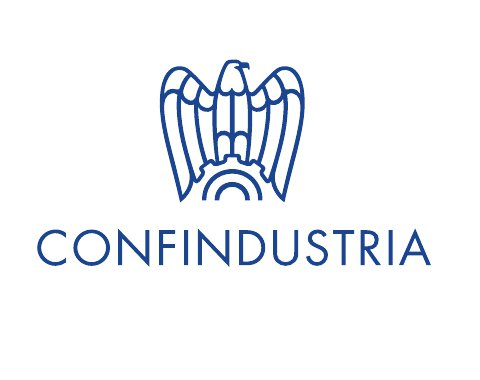Fashion and culture have a centuries-old relationship, but one that could probably benefit from a revision. Particularly because the post-George Floyd era ushered in a necessary demand for a cultural sensitivity that had previously been lacking in too many. [Fashion Brands Need a Cultural Transformation, and Collabs Aren't the Cure-All – WWD]
Today, according to Roberto Ramos, founder and chief executive officer of cultural innovation consultancy The Ideatelier, and former Doneger Group senior vice president, “It’s about what role culture can play, but just a healthier, organic relationship with culture from the outside [of the organization] but from the inside as well.”
Trend forecasting has always looked to the world beyond for insight as to what’s happening, but the cultural transformation Ramos prescribes for fashion could see those keen to move in the right direction make changes starting with how they seek inspiration.
Where the few were once scoping and driving the trends, that cultural “tunnel vision” of sorts, he said, “tends to be a very culturally appropriating way of tapping into culture.”
Now companies need to look at culture — just as they need to look at their workforces, their product and their marketing — in a much more diverse way.
“It’s about how to pay more attention to the outlier, how to go in and have these types of conversations. How to create systems that really embrace diversity, different sort of cultures,” Ramos said. “Because if you don’t have that from the very beginning, then you’re really starting at a deficit because then these products are not designed to reflect the new global domestic emerging majority.”
Brands must become “listening brands,” according to Ramos, and they need to listen to more than just what their customer wants in terms of product or sustainability, but to listen and hear what that diverse consumer is saying is important to them and why. To do so, however, will require some self-reflection and solidifying a brand identity, not just running “all over the place” in an often-messy attempt to quickly latch on to what’s new and now.
“Obviously, brands differ in their emotional intelligence around which they play with culture. There are those that are true culture creators [and there are others among which] there’s a lot of insecurity. And you see that manifest in terms of these extreme collaborations, trying to co-opt. And a lot of that is fine, we can’t judge because it’s a period of extreme resurgence of uncertainty, and creative chaos is part of it, but fashion can do better in terms of going beyond the surface level,” Ramos said.
Today’s consumers, he said, (particularly the younger ones) are resourceful, they’re rethinking ownership, they’re shirking big establishment, hungry for a new form of leadership and intersectional identities have necessitated a fluidity that will come with more than just ungendered dressing. All of it is upending the long-held notion of trend.
“The idea of what is a trend, it is so much more fluid and that’s why it becomes less about colors and fabrics and more about what are those conversations [being had],” Ramos said. “That’s why brands need to have a better system to embrace culture, starting from how they hire to how they get inspired to the processes, and what that would look like in terms of trend inspiration and design.
“In order to get this right, you need to leverage the power of culture from the outside but more importantly from the inside,” he added. “The types of decisions you make, how you show empathy, how you show courage, will resonate for a long time.”
That means looking at cultural transformation holistically. That is what The Ideatelier advises its brand and retail clients — Target a recent one among them — to do, from commitments to hiring across cultures, to ensuring cultural diversity is part of the brand DNA and reimagining cultural and trend forecasting to lead with a global perspective, and hearing from that global population directly.
How? Through cultural immersion sessions, Ramos said. It’s truly attempting to get inside a culture rather than peering at it from a very distant outside and self-determining what’s compelling. It’s talking to influencers and artists, reading literature and listening to podcasts the community connects with, it’s looking individually at the Black experience, the Asian experience, the Latine experience and the nuances within each. It’s participating in the cultural conversations and what’s specific to the groups engaged in them. He calls it the “house party approach,” where brands and retailers are active guests at the house party, taking it all in.
“The goal is helping clients in that expedited journey of what’s happening in culture, what are the opportunities in terms of creative concepts, product concepts, categories, where there’s an under-indexing of these groups, etc.,” he said. “And then with a lot of them, once we have that product, to tell that full story from a marketing perspective.”
As far as what is happening in culture right now, The Ideatelier sees an overarching sociocultural shift it’s calling “Hyperflux.”
It’s defined by flexibility, adaptiveness, “deep personalization,” a blending between soft/hard, art/science or what Ramos calls, “a shapeshifting balance of extremes.” As fashion, it’s journeywear, which has all the comforts of athleisure but all the panache of high fashion.
“This shift is all around the drastic tectonic shifts we’re seeing across sociocultural structures and the individual’s relationship,” he said. “There continues to be a strong anti-establishment sentiment. A post-pandemic chaotic state of euphoria to make up for lost time is launching an aesthetic code that is carefree, over the top and futuristic. There is an unapologetic vibe at work and it is broad in how it draws inspiration. The result is an extreme mashup and sense of experimentation.”
That experimentation among the young consuming public could easily be one of the things that contributed to the fall/winter 2022-23 couture’s season of nakedness, since the runway — couture not exempt — is often more likely today to follow what’s happening in the world than lead it. But by the same token, and nodding to the mashup Ramos speaks of, that nakedness was also countered on the runways by heavier velvets, layered looks and a more demure aesthetic, styles that serve to protect more than reveal.
Owing largely to COVID-19, people are endeavoring to both duck the banality that claimed the better part of the last two years and simultaneously protect themselves from a world with too much of everything happening at once, which is the other side of what The Ideatelier sees in Hyperflux.
“We see a hunger for systems and designs that protect us and augment us,” Ramos said (hence the at least perceived ‘safety’ of the metaverse and all the augmentation that comes with it). “We see the continued blending of technology with softer emotive systems resulting in tech that feels softer, more interpersonal and with designs that become aesthetic extensions. Think of the new aesthetics of the ear-pods or the increasingly sleek and playful aesthetic of phone, home voice systems, etc.”
It’s a creative chaos of sorts, Ramos said. And these days there’s little choice but to embrace it.
“It’s all about embracing the uncertainty and contradictions of this highly charged era, giving the individual a creative outlet to express themselves,” he said. “We see this in the wondrous experimentation in personal design and style. Existing trends around this are the Y2K obsession of mashups and play, the emerging Indiesleaze trends taking strong cues from the underground club scene, along with futuristic, dystopian styles.” (Read: Demna’s fall 2022 couture collection for Balenciaga).
Brands and retailers that embrace the necessary cultural transformation boldly, intentionally, will lead in the post-pandemic world, according to Ramos.
“What we’re experiencing is the biggest reset of the century,” he said. “This will create the urgency for bold change.”



